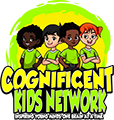Meltdowns are a normal part of childhood especially in the early school years when kids are still learning how to manage big emotions. For parents, though, these moments can feel overwhelming and frustrating. The good news? With the right tools and mindset, meltdowns can become opportunities to teach resilience, self-regulation, and emotional awareness.
What Is a Meltdown?
A meltdown is an intense emotional reaction that happens when a child feels overwhelmed and can’t manage their big feelings in the moment. Unlike a tantrum, which may be more intentional or goal-driven; a meltdown is not about getting attention or “acting out.” Instead, it’s the body and brain’s way of releasing stress when emotions, sensory input, or frustration become too much to handle.
For children ages 5–7, meltdowns often look like crying, yelling, stomping, hiding, or shutting down. They aren’t signs of “bad behavior,” but signals that your child needs support, calm, and guidance to regulate and recover.
5 Practical Ways to Manage Meltdowns
1. Stay Calm and Regulate Yourself
Your child looks to you for cues on how to handle stress. If you stay calm, steady, and patient, you model exactly what self-control looks like. Take slow breaths, speak softly, and remind yourself that this is your child’s way of asking for help; not a personal attack.
2. Create a Safe Space
During a meltdown, children often feel overwhelmed by their environment. Too much noise, light, or activity can make things worse. Guide your child to a calm-down corner, bedroom, or quiet spot with a favorite stuffed animal or sensory item. This gives them the safety they need to begin calming down.
3. Validate Their Feelings
Children this age want to feel seen and heard. Saying things like, “I can see you’re really upset,” or “It sounds like you’re frustrated right now,” doesn’t mean you’re agreeing with their behavior; it means you’re acknowledging their feelings. Validation helps reduce emotional intensity and builds trust.
4. Use Visual or Sensory Tools
Practical tools can make a huge difference in redirecting emotions. Try blowing bubbles together (great for teaching deep breathing), giving them a stress ball to squeeze, or offering a “calm-down jar” filled with glitter and water. These small tools create focus and provide healthy outlets during overwhelming moments.
5. Teach Coping Skills When Calm
The best time to learn new coping strategies is not during a meltdown; but afterward, when your child is calm and ready to listen. Practice simple techniques like:
-
Counting to 10
-
Taking “dragon breaths” (big inhale, long exhale)
-
Drawing their feelings
-
Using words like “I feel mad because…”
When practiced consistently, these skills give kids confidence and tools to handle big emotions in healthier ways.
Final Thoughts
Meltdowns aren’t failures, they’re learning moments. With patience, empathy, and consistent practice, you can help your child build the emotional skills they’ll use for a lifetime. Remember, the goal isn’t to stop the meltdown instantly—it’s to support your child in moving through it safely and teaching them better ways to cope next time.
✨ At Cognificent Kids Network, we believe that every child deserves to feel seen, supported, and empowered to manage their emotions.
#KidsMeltdownSupport #PositiveParenting #GentleParenting #CognificentKids #MindfulParenting #RaisingResilientKids #EmotionalRegulation #ParentingTips #TantrumTools #BlackFamiliesMatter #SELforKids #PeacefulParenting #CalmParenting #ChildDevelopment #ParentingWithLove


